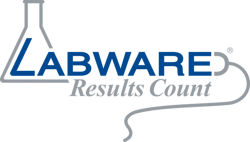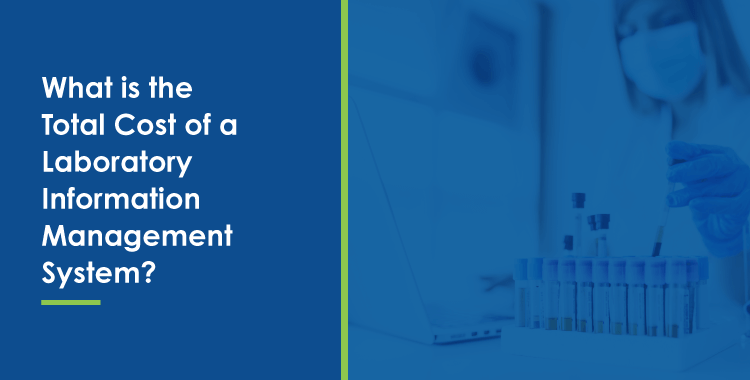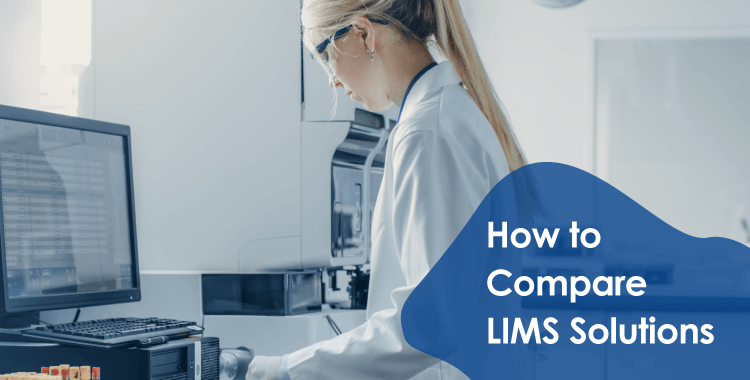
As the demand for efficient laboratory management increases, a thorough comparison between LIMS solutions becomes crucial in selecting the best system to streamline your lab operations. To make an informed decision, this blog post will provide insights on how to compare different LIMS software.
We will evaluate desired features and functionalities, assess data storage capacity requirements, examine security features offered by various vendors, and integration capabilities with existing systems as well as frequency of updates & support services and cost analysis & pricing tiers.
We will discuss evaluating desired features and functionalities, assessing data storage capacity requirements, examining security features offered by various vendors, and integration capabilities with existing systems. Additionally, we will explore frequency of updates & support services as well as cost analysis & pricing tiers to ensure you make an informed decision.
Lastly, vendor experience and customer testimonials play a significant role in determining the most suitable LIMS provider. By following our comprehensive guide on LIMS solutions comparison, you'll be better equipped to select a system that meets all your laboratory's needs while maximizing efficiency and productivity.
Table of Contents:
- Evaluate Desired Features and Functionalities
- Creating a grading rubric for evaluating LIMS vendors
- Identifying essential features required by your laboratory
- Assess Data Storage and Structure
- Evaluating Data Storage Capacity Requirements
- Analyzing Accessibility Options Provided by Different Vendors
- Integration Capabilities with Existing Systems
- Evaluating Compatibility Between Current Systems and Prospective LIMS Solutions
- Ensuring Smooth Workflow Transitions Post-LIMS Implementation
- Frequency of Updates & Support Services
- Comparing Update Release Schedules Across Vendors
- Reviewing Technical Assistance Availability Hours and Response Times
- Cost Analysis & Pricing Tiers
- Evaluating Upfront Costs and Ongoing Maintenance Fees
- Identifying Additional Charges for Specific Features
- Vendor Experience & Customer Testimonials
- Analyzing Vendor Track Records in Meeting Project Deadlines
- Assessing Industry-Specific Expertise through Customer Testimonials
- FAQs in Relation to LIMS Solutions Comparison
- What are the different types of LIMS?
- Are all LIMS the same?
- What is the best functionality of LIMS?
- Main difference between Laboratory Information Management System (LIMS) and Laboratory Information System (LIS)?
- Conclusion
Evaluate Desired Features and Functionalities
To objectively compare LIMS solutions, lab managers should create a grading rubric that includes desired features and functionalities for each LIMS vendor. This process will help to identify the most suitable solution based on specific laboratory needs such as sample tracking, data management, reporting capabilities, and integration with existing systems.
Creating a grading rubric for evaluating LIMS vendors
Begin by listing all the essential features your laboratory requires from a LIMS solution. Some common functionalities include sample tracking, data analysis tools, workflow automation, and regulatory compliance support. Assign a weight or priority level to each feature based on its importance in your lab's daily operations.
- Sample Tracking: High Priority
- Data Analysis Tools: Medium Priority
- Workflow Automation: Low Priority
- Regulatory Compliance Support: High Priority
This weighted list of features can then be used as criteria when comparing different LIMS vendors. For example, if two vendors offer similar functionality but one has more robust sample tracking capabilities (which is a high-priority item), it may be worth considering that vendor over another.
Identifying essential features required by your laboratory
Different laboratories have unique requirements depending on their industry sector or research focus. Therefore, it is crucial to consider any specialized functions necessary for your lab's operation during the comparison process. These might include:
- Bioinformatics support: Laboratories involved in genomics or proteomics research may require advanced bioinformatics tools for data analysis and interpretation.
- Quality control: Labs in regulated industries such as pharmaceuticals or food safety may need built-in quality control features to ensure compliance with industry standards and regulations.
- Integration with existing systems: If your lab already uses other software platforms (e.g., electronic lab notebooks), seamless integration between these systems and the LIMS solution is essential for efficient workflows.
In conclusion, a thorough evaluation of desired features and functionalities using a grading rubric can help laboratory managers make an informed decision when comparing different LIMS solutions. By prioritizing essential functions based on their importance in daily operations, labs can identify the most suitable vendor that meets their specific needs while ensuring compatibility with existing systems and processes.
It is essential to examine the security features of a LIMS solution thoroughly before making an informed decision. By evaluating integration capabilities with existing systems, you can ensure that your workflow transitions post-LIMS implementation are seamless and efficient.
Key Takeaway: To compare LIMS solutions, lab managers should create a grading rubric with desired features and functionalities. This will help identify the most suitable solution based on specific laboratory needs such as sample tracking, data management, reporting capabilities, and integration with existing systems. Different laboratories have unique requirements depending on their industry sector or research focus that must be considered during the comparison process.
Assess Data Storage and Structure
Different industries may have varying needs in terms of data storage capacity, accessibility options, backup frequency, or archiving policies. By analyzing these aspects across different vendors, you can find the best fit for your organization.
Evaluating Data Storage Capacity Requirements
Determining the appropriate data storage capacity for your laboratory involves considering factors such as sample volume, testing complexity, and regulatory compliance requirements. Some laboratories may require a higher level of storage due to extensive historical records or large-scale projects. Compare each vendor's offerings regarding maximum storage limits and scalability options to ensure that their solution can accommodate both current and future needs.
Analyzing Accessibility Options Provided by Different Vendors
In today's digital age, having secure yet convenient access to critical laboratory information is essential for efficient operations. When evaluating LIMS solutions' accessibility features from various vendors, consider factors like remote access capabilities (e.g., through mobile devices), user authentication protocols (e.g., single sign-on), and role-based permissions settings that allow granular control over who can view or modify specific data elements within the system.
- Remote Access: A cloud-based LIMS solution typically offers greater flexibility in accessing lab data remotely compared to an on-premise installation; however, this should be balanced against potential security concerns associated with storing sensitive information off-site.
- User Authentication Protocols: Ensure that any prospective LIMS provider employs robust authentication methods to prevent unauthorized access to your laboratory's data.
- Role-Based Permissions: Implementing a LIMS solution with customizable user roles and permissions allows you to maintain control over sensitive information while still enabling efficient collaboration among team members.
In addition, consider the ease of use for each vendor's accessibility features. A system that is intuitive and user-friendly will facilitate smoother adoption by laboratory staff, ultimately leading to increased productivity and reduced training time. For example, some vendors offer user interface customization options, allowing laboratories to tailor the software layout according to their specific workflows or preferences.
It is essential to assess the data storage and structure of LIMS solutions in order to ensure that it meets the company's needs. Examine security features carefully, as these will determine how well your system is protected from unauthorized access.
Key Takeaway: When comparing LIMS solutions, it is important to assess data storage and structure that align with your laboratory's requirements. Determine the appropriate data storage capacity for your lab by considering factors such as sample volume, testing complexity, and regulatory compliance requirements. Analyze accessibility options provided by different vendors including remote access capabilities through mobile devices, user authentication protocols like single sign-on, and role-based permissions settings that allow granular control over who can view or modify specific data elements within the system.
Integration Capabilities with Existing Systems
In today's fast-paced laboratory environment, seamless integration of a LIMS solution with existing systems is crucial for maintaining efficiency and minimizing disruptions during implementation. The ability to easily integrate your chosen LIMS software into current workflows will not only save time but also reduce the potential for errors in data management.
To evaluate compatibility between prospective LIMS solutions and your lab's current systems, consider the following:
Evaluating Compatibility Between Current Systems and Prospective LIMS Solutions
Before selecting a new LIMS solution, it is essential to understand how well it can work alongside other software platforms already in use within your laboratory. This may include electronic lab notebooks (ELNs), enterprise resource planning (ERP) tools, or customer relationship management (CRM) applications. Assess whether each vendor offers built-in integrations or application programming interfaces (APIs) that allow their system to communicate effectively with these existing platforms.
- Review product documentation provided by vendors to identify any pre-built integrations.
- Contact sales representatives from each company for information on available APIs or custom integration options.
- If possible, request demonstrations of successful integrations they have completed for similar organizations within your industry sector.
Ensuring Smooth Workflow Transitions Post-LIMS Implementation
A smooth transition when implementing a new LIMS solution is vital to avoid unnecessary downtime and maintain productivity levels within the lab. To ensure this process goes as smoothly as possible:
- Create an inventory of all critical processes currently supported by existing systems that need to be integrated with the new LIMS solution.
- Develop a detailed project plan outlining each step required for successful integration, including any necessary customization or configuration tasks.
- Engage key stakeholders within your organization early in the planning process to ensure their input is considered and potential challenges are addressed proactively.
In addition to these steps, it may also be beneficial to consult with an experienced LIMS consultant who can provide guidance on best practices for integrating systems,ensuring a smooth transition. By carefully evaluating compatibility between current systems and prospective LIMS solutions, as well as taking proactive measures during implementation planning, you can help set your laboratory up for success with its new solution.
Connecting a LIMS with existing data storage and ERP systems is an important factor to consider when evaluating vendors, as it can have a significant impact on the overall workflow. As such, frequency of updates and support services should also be evaluated in order to ensure that any new system will meet all operational requirements.
Key Takeaway: When selecting a LIMS solution, it is important to evaluate its compatibility with existing systems in the laboratory. This can be done by reviewing product documentation, contacting sales representatives for information on APIs or custom integration options, and requesting demonstrations of successful integrations. To ensure a smooth transition post-implementation, creating an inventory of critical processes and engaging key stakeholders early in the planning process can help set your lab up for success.
Frequency of Updates & Support Services
Regular updates ensure that the LIMS solution remains current with industry standards and emerging technologies, while reliable support services can provide peace of mind during unexpected system issues.
Comparing Update Release Schedules Across Vendors
An ideal LIMS vendor should have a consistent update release schedule, ensuring that your laboratory's system stays up to date with new features and improvements. When evaluating vendors, inquire about their update frequency and whether they offer major version upgrades or incremental updates. Additionally, consider if these updates require downtime for installation or if they can be applied seamlessly without interrupting lab operations.
- Major Version Upgrades: These involve significant changes in the software architecture or functionality and may require more extensive planning for implementation.
- Incremental Updates: Small scale enhancements focused on improving existing features or fixing bugs; typically easier to implement without disrupting workflows.
Reviewing Technical Assistance Availability Hours and Response Times
Beyond regular software updates, it is crucial to assess each vendor's technical support availability as well as response time guarantees (if any). This information will help you understand how quickly potential issues can be addressed when needed most. Some questions to ask include:
- "What are your standard support hours?" - Determine if their business hours align with your laboratory's operational needs.
- "Do you offer 24/7 support?" - For laboratories with round-the-clock operations, having access to technical assistance at any time can be invaluable.
- "What is your average response time for support requests?" - Knowing how quickly a vendor typically responds to issues will help you gauge their commitment to customer satisfaction.
- "Do you provide different levels of support based on the severity of an issue?" - Some vendors may prioritize critical issues over minor ones, ensuring that urgent problems are addressed promptly.
In conclusion, understanding the frequency of LIMS updates and evaluating each vendor's technical assistance availability hours and response times will play a crucial role in selecting the right solution for your laboratory. By carefully considering these factors during the vendor selection process, you can ensure that your chosen system remains up to date and well supported throughout its lifecycle.
Frequency of updates and support services are critical components to consider when selecting a LIMS solution, as they can have a major impact on the overall success of your system. Careful consideration of cost and tiering should be undertaken to guarantee you're getting the most out of your expenditure.
Key Takeaway: When comparing LIMS solutions, it is important to consider the frequency of updates and support services offered by different vendors. An ideal vendor should have a consistent update release schedule with reliable technical assistance availability hours and response times. This will ensure that your laboratory's system remains up to date with new features while providing peace of mind during unexpected issues.
Cost Analysis & Pricing Tiers
To make an informed decision based on the total cost of ownership over time, consider evaluating upfront costs, ongoing maintenance fees, and any additional charges for specific features. This will help you find a suitable LIMS solution that fits within your laboratory's budget constraints while still meeting all of your requirements.
Evaluating Upfront Costs and Ongoing Maintenance Fees
The initial investment in a LIMS solution can vary greatly depending on the vendor and the level of customization required for your laboratory. Some vendors may offer different pricing models, such as perpetual licenses or subscription-based plans. It is essential to weigh these options carefully against your lab's needs and financial capabilities.
- Perpetual Licenses: These involve paying a one-time fee for indefinite use of the software but may require separate annual maintenance fees to receive updates and support services.
- Subscription-Based Plans: With this model, laboratories pay an ongoing monthly or yearly fee which typically includes access to updates and support services without any additional charges.
In addition to upfront costs, factor in ongoing expenses like maintenance fees or potential upgrade costs when new versions are released. Understanding these aspects will provide insight into long-term financial commitments associated with each LIMS solution under consideration.
Identifying Additional Charges for Specific Features
Beyond standard licensing fees, some vendors might charge extra for certain features or functionalities that could be crucial to your laboratory's operations. Examples of such features include advanced reporting capabilities, integration with third-party software platforms, or additional user licenses for growing teams.
When comparing LIMS solutions, it is essential to identify any hidden costs associated with these add-ons and factor them into the overall cost analysis. Request detailed pricing information from each vendor and ensure that all potential charges are accounted for in your comparison process.
In summary, a comprehensive cost analysis should encompass upfront investment requirements, ongoing maintenance fees, and any additional charges related to specific features or functionalities. By carefully evaluating these factors across different vendors' pricing tiers, you can make an informed decision about which LIMS solution best aligns with your laboratory's budgetary constraints while still meeting its unique needs.
It is essential to thoroughly review the cost analysis and pricing tiers of a LIMS solution before making any commitments, as this will help you make an informed decision. Furthermore, assessing vendor experience and customer testimonials can provide valuable insight into the reliability of your chosen system.
Key Takeaway: When comparing LIMS solutions, it's important to conduct a thorough cost analysis and understand the various pricing tiers offered by each software vendor. This includes evaluating upfront costs, ongoing maintenance fees, and any additional charges for specific features. Identifying hidden costs associated with add-ons is also crucial in making an informed decision about which LIMS solution best aligns with your laboratory's budgetary constraints while still meeting its unique needs.
Vendor Experience & Customer Testimonials
Choosing the right LIMS solution for your laboratory involves more than just comparing features and functionalities. It is crucial to consider each vendor's experience in delivering projects within specified timelines, as most laboratories have a target go-live date for their LIMS implementation. By analyzing the track record of different vendors, you can gain confidence in their ability to meet project requirements successfully.
Analyzing Vendor Track Records in Meeting Project Deadlines
To assess a vendor's reliability and expertise, inquire about their previous experiences with similar projects. Ask them how many successful implementations they have completed within your industry sector and whether they were able to meet or exceed the established deadlines. A reputable LIMS provider should be able to detail case studies or examples of past projects, demonstrating their competence in managing complex tasks under tight time constraints.
Assessing Industry-Specific Expertise through Customer Testimonials
In addition to examining a vendor's history of meeting project deadlines, it is essential to evaluate their industry-specific expertise by requesting customer reviews and testimonials. These firsthand accounts from other laboratories can offer valuable insights into the quality of service provided by each software vendor, as well as any potential challenges that may arise during implementation.
- Contact references: Request contact information for current clients who are using the same LIMS solution you are considering implementing. Speak directly with these customers about their experiences working with the software provider.
- Read online reviews: Browse independent review websites such as TechValidate or G2 to gather unbiased opinions from other users.
- Attend industry events: Participate in conferences, webinars, and workshops where LIMS vendors showcase their products. This will allow you to network with peers who have firsthand experience using the solutions under consideration and can provide valuable feedback on vendor performance.
In conclusion, carefully vetting each LIMS software provider's experience and customer satisfaction levels is a crucial step in selecting the right solution for your laboratory. By analyzing vendor track records in meeting project deadlines and assessing guidance through peer testimonials, you can make an informed decision that ensures successful implementation of your chosen LIMS system.
Key Takeaway: When choosing a LIMS solution for your laboratory, it's important to consider the vendor's experience in delivering projects on time. Analyzing their track record and requesting customer testimonials can help assess their reliability and expertise. Contacting references, reading online reviews, and attending industry events are all ways to gather valuable feedback from other users before making an informed decision.
FAQs in Relation to LIMS Solutions Comparison
What are the different types of LIMS?
There are various types of Laboratory Information Management Systems (LIMS) designed to cater to specific industry needs. The main categories include:
- Industry-specific LIMS, such as clinical, pharmaceutical, and environmental
- Bespoke or custom-built LIMS tailored for unique laboratory requirements
- Cloud-based LIMS that offer remote access and data storage capabilities
- Open-source LIMS which allow customization through available source code
Are all LIMS the same?
No, not all LIMS are the same. They differ in terms of features, functionalities, target industries, pricing models, and deployment options. It is essential to evaluate your laboratory's specific needs before selecting a suitable LIMS solution.
What is the best functionality of LIMS?
The "best" functionality depends on individual lab requirements; however, some key functions that make a robust and efficient system include sample management and tracking, data management, e-signature capability for compliance with regulations like FDA's 21 CFR Part 11, and integration with existing instruments and software systems.
Main difference between Laboratory Information Management System (LIMS) and Laboratory Information System (LIS)?
Laboratory Information Management Systems (LIMs) focus on managing samples, data, and workflows across diverse industries while Laboratory Information Systems (LIS) are specific to clinical laboratories, handling patient data, test results, and billing information. LIMS are more versatile and can be customized for various lab types, whereas LIS caters exclusively to the healthcare sector.
Conclusion
By evaluating desired features and functionalities, assessing data storage and structure, examining security features, integration capabilities with existing systems, frequency of updates, support services, cost analysis, pricing tiers, as well as vendor experience and customer testimonials, you can make an informed decision that meets your needs.In conclusion, conducting a thorough LIMS solutions comparison is essential to ensure you select the best fit for your laboratory's specific requirements. Take the time to carefully assess each vendor based on these criteria prior to making any definitive choices.
If you're looking for a trusted provider of LIMS solutions with extensive industry expertise and experience in meeting project deadlines, contact LabWare today!
